Around 5km west of our base in Armenistis lies the little village of Nas. It has quite a nice pebbly beach, popular particularly with nudists, and is also home to one of the few archaeological sites of Ikaria, the Temple of Artemis (on the left of the photo below).
Apparently it dates back to the 6th century BC. However, its treasures have long disappeared and most of its stone blocks have been re-used for other things. Rumour has it that some of the columns of the temple lie in the water just off the beach, but I do not know whether that is true. What can be seen on the site is essentially just the platform on which the building once stood.
Nas beach faces roughly west and is therefore an ideal spot for sunset shots, particularly from the taverna at the top.
If you leave Armenistis in the other direction, you get to Gialiskari, where the pretty little church at the top of this piece is located. You can easily walk there. You can also walk to our next destination, the Theoktistis Monastery, but it is quite a hike if you start at sea level. The monastery is a fair distance up into the mountains.
The church there is picture-postcard material and the inside is also well worth seeing.
The location is lovely, with very good views across the surrounding hills. In early summer the different shades of green are still very fresh. The outbuildings are in the traditional Ikarian style: constructed from the local stone (of which there is plenty around) and designed to blend in with the rocky landscape. In times when pirate ships sailed the surrounding waters the latter was particularly important, as it made the buildings more difficult to spot from a distance.
Behind the various outbuildings is a small chapel, built in a very uniquely Ikarian style into the huge boulders situated there.
Photos of the chapel – known as the Chapel of Theoskepasti – are often used in promotion material about the island and it is probably more famous than the monastery as such.
There is a small shop at the monastery, selling local produce and refreshments. Loukoumades – small, fluffy, deep-fried balls of dough – are also on offer and we find them hard to resist wherever we come across them. Below is a photo of ours being fried in the outhouse.
The next shot shows the finished product, covered in local honey and a bit of cinnamon. Very simple, but absolutely delicious!
Ikarian honey, incidentally, is renowned for its quality all over Greece. You will find it on sale – at a significant price premium – in specialist shops in Athens. In fact there are several different kinds, distinguished by the type of flowers on which the bees feed.
You see bee hives all over the island. The ones in the photo below were in an area very high up into the mountains, at an altitude of around 800 to 900m.
If you go on a little bit further, you reach what is known as the Erifi Plateau, a truly fascinating area.
There are enormous boulders everywhere and the vegetation consists largely of bracken. The few stunted trees are having trouble hanging on here, as it is frequently very windy.
As you can just about make out in the shot below, much of the plateau is surrounded by a kilometres-long old dry-stone wall. I have never been able to get detailed answers to questions about its origins or precise purpose. I assume that crops were being protected here at some time, probably from the mountain goats roaming the area. It has been suggested that the crop involved was potatoes. In any case, there are a few breaches in the otherwise remarkably well-preserved wall and I guess, therefore, that it does not keep the goats out anymore – if it ever really did.
From the southern edge of the plateau there are good views down towards the coastline, almost 1000m below. The town of Manganitis lies at the bottom.
The next couple of photos show the bizarre walls which the boulders form in places.
Sometimes you also come across towers and, as I have pointed out in an earlier piece, it can be difficult to believe that they have formed completely naturally through erosion.
The goats far outnumber visitors up here.
Continuing east along the mountain ridge you might come across the building below.
While it looks very much like the Flintstones’ family home, it was built by the owner of a taverna in Armenistis. He once told me how he and some friends struggled to get all the materials up here, on foot and by trail-bike, over extremely rough terrain.
The contrast between the barren landscapes at the top of the mountains and the fertile lands further down below could hardly be greater. We were surprised to come across these almost ripe prickly pears on our latest trip. They normally ripen in September, and this was June.
When in the past we have come here at the end of summer or in early autumn we have gone out picking them (using long, thick leather gloves). The figs are also ripe at that time and there are many fig trees just by the roadside where you can pick the fruit without upsetting anybody.
In June we found mulberries in various locations. However, they tend to squash as you pick them, leaving you with red stains all over your hands (and clothes, if you are not careful).
Our friend Eleni took us to her family home in the mountains, where the cherries and red plums were at just the right stage for picking. Below is the result of only half an hour’s work between the three of us.
The abundance and variety of fruit on the island is reflected in the offerings of local shops. The next photo shows some of the jams and preserves in one just around the corner from where we were staying.
As we are on the topic of food, I will seize the opportunity to fulfil a promise I made in the first part of the series, namely to show you a couple of the more unusual dishes we enjoyed on our last trip. They are not linked to Ikaria in any special way, but we had not encountered them anywhere else before.
The usual way of starting a Greek meal, of course, is with a tomato and cucumber salad topped with Feta cheese and oregano.
We love a traditional Greek salad of that kind, but we also very much enjoyed the alternative below, which is on offer at one of the restaurants in Armenistis. It is a rusk salad, containing prawns, capers, parsley, tomatoes, onions, and a good helping of Kopanisti cheese (which has a flavour not too dissimilar to Roquefort).
The second unusual dish was described on the menu (of the same restaurant) as ‘frumenty’. We had never heard that expression, but on looking it up discovered that it is a medieval Western European dish based on boiled cracked wheat, to which milk and eggs are added. The Greeks call it ‘trahana’ and it is sold in a dried form, broken into tiny little granules. You can then use it like pasta or rice and the dish pictured below can best be described as a kind of risotto with chicken and sundried tomatoes.
A few days later we tried another version, this time containing goat meat, celery, and carrots. It was equally delicious – and we now have a packet of trahana in our kitchen cupboard, ready for a series of experiments.
I shall conclude this piece with a photo of a dish that used to be on the menus of many restaurants in Greece, but which, sadly, has become a rare find: stuffed squid in a tomato and red wine sauce. It is one of my personal favourites – my wife is less keen on squid – and one of the restaurants in Armenistis does a particularly good version. As you can see, the portions are not exactly small either.

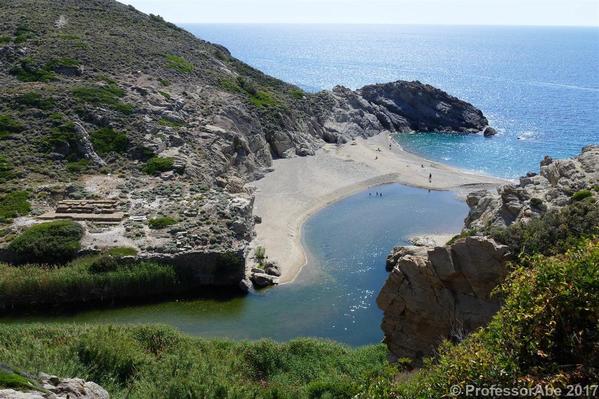
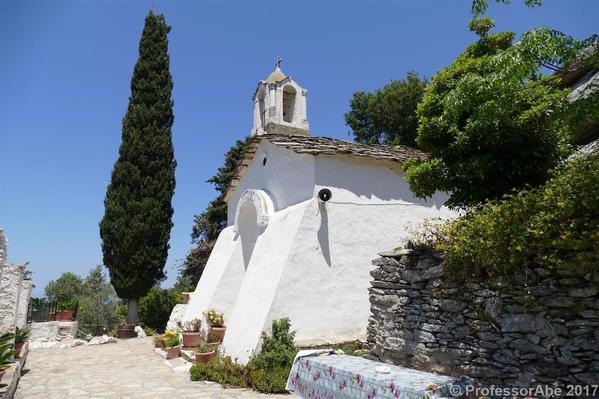
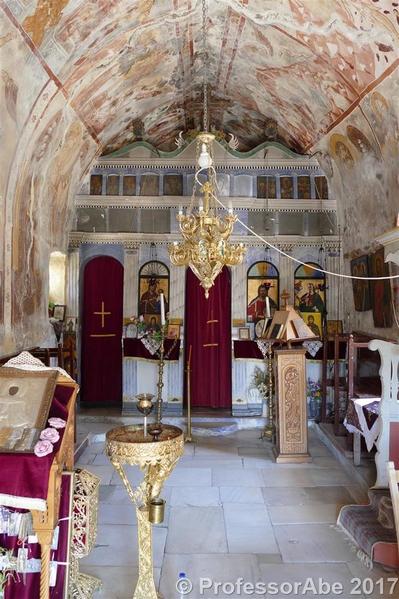







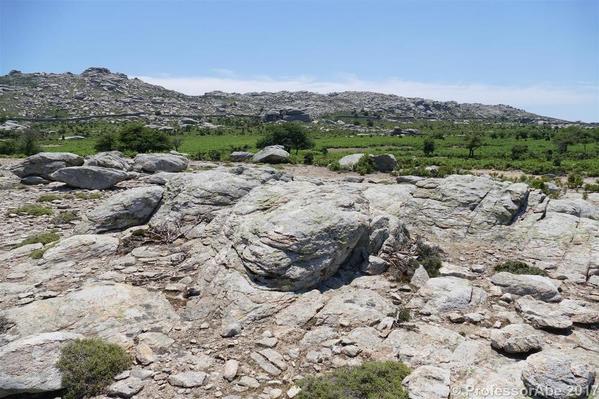
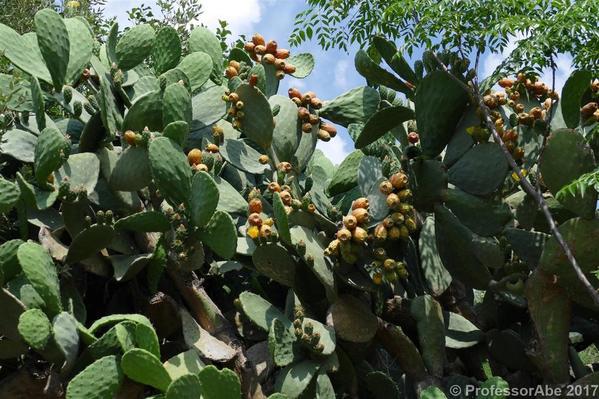
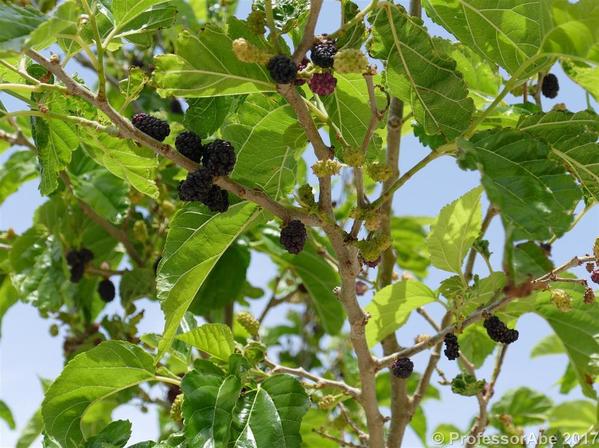
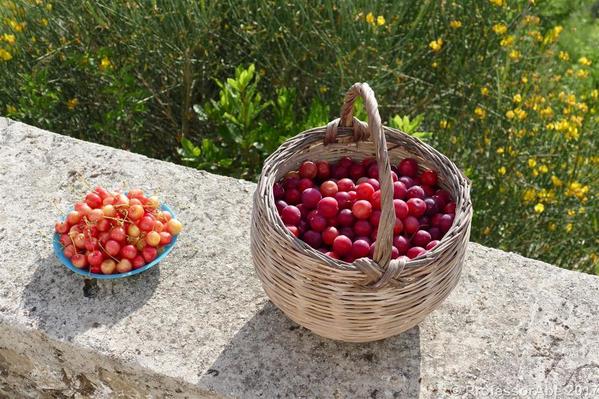
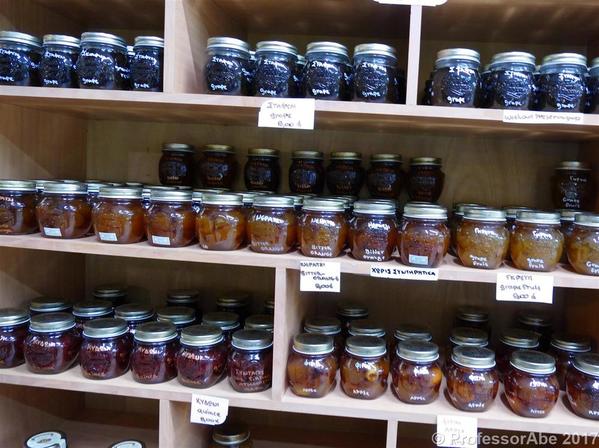

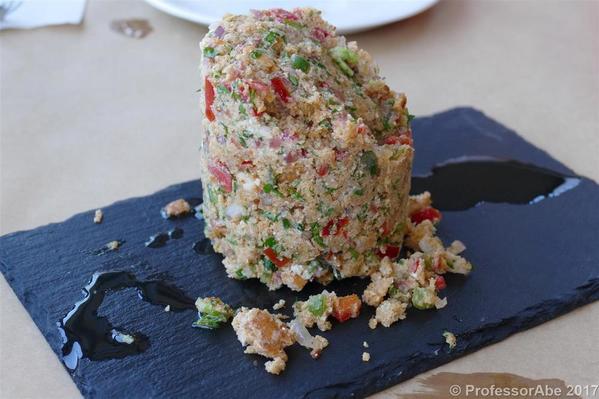







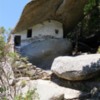
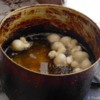
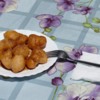

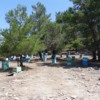






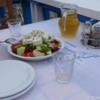

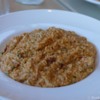
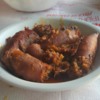
Comments (0)